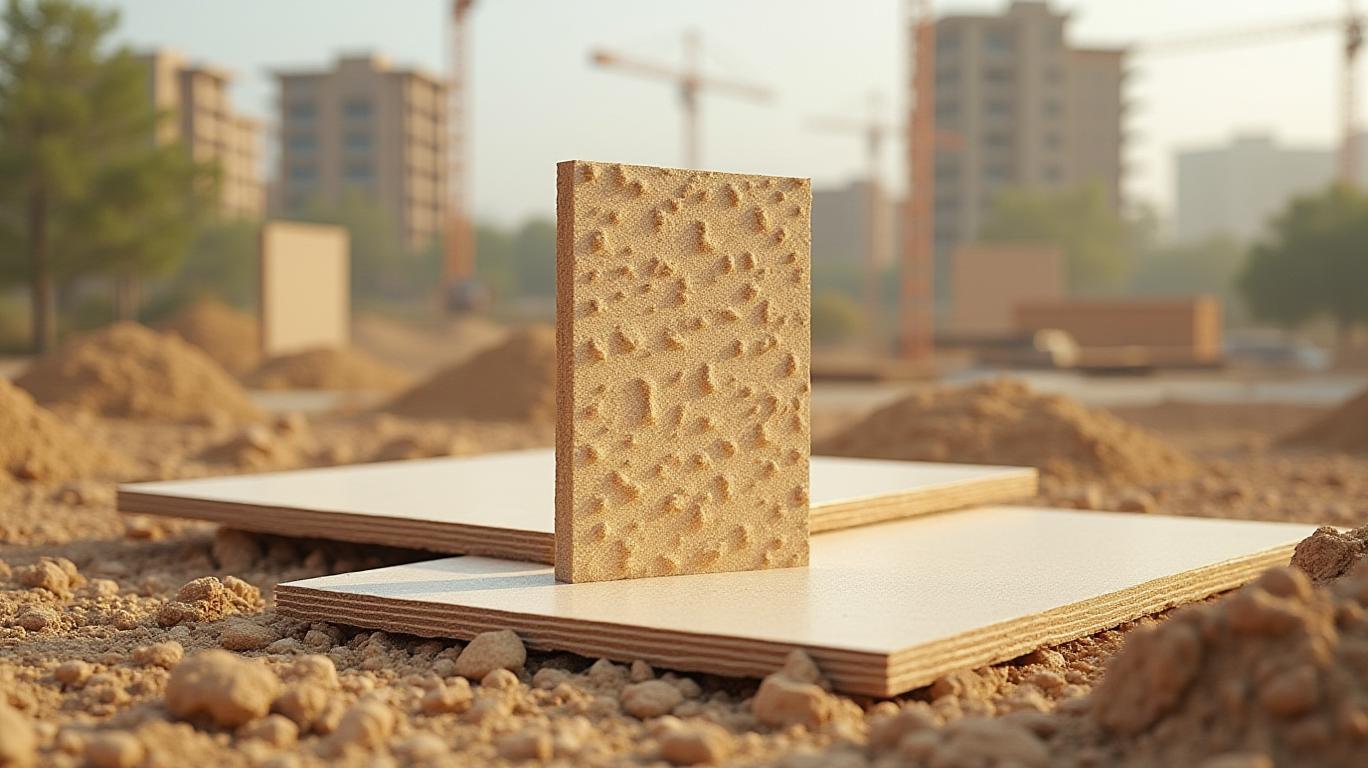AInvest Newsletter
Daily stocks & crypto headlines, free to your inbox
The construction industry is a climate paradox. It accounts for nearly 40% of global CO₂ emissions, yet its materials and processes have remained stubbornly carbon-intensive for decades. Enter Adaptavate, a UK-based startup now positioned to disrupt this status quo. With a freshly secured £2.7 million pre-Series A funding round, the company is advancing its mission to turn buildings into carbon sinks rather than emitters. This isn’t just a sustainability play—it’s an investment thesis with legs.
At the heart of Adaptavate’s vision is Breathaboard, a revolutionary plasterboard alternative that slashes emissions while actively absorbing CO₂ during production. Traditional plasterboard relies on energy-intensive processes and emits up to 10kg of CO₂ per m². Breathaboard flips the script, reducing emissions by 4kg of CO₂ per m² and sequestering an additional 1kg of CO₂ through its carbon-negative manufacturing. This dual-action material uses renewable agricultural feedstocks and waste materials, sidestepping the fossil-fuel dependency of conventional construction products.

The technology’s scalability is bolstered by Project Crystal, an industrial demonstrator facility funded by this latest round. This facility will serve as a blueprint for global manufacturers to adopt Adaptavate’s carbon-capture processes, enabling the transition of construction from a carbon emitter to a carbon sink.
The £2.7 million funding round was led by Undivided Ventures (Asia-focused VCs) and Skreenhouse Ventures by SigmaRoc, the European arm of publicly listed SigmaRoc, a lime and minerals giant. This pairing signals a masterstroke in strategic alignment: SigmaRoc’s industrial expertise and distribution networks in Europe will fast-track Breathaboard’s commercialization, while Undivided Ventures opens doors to high-growth markets in South Asia.
The partnership also includes a Memorandum of Understanding to advance Project Crystal, leveraging SigmaRoc’s infrastructure and supply chains. Existing investors and industry participants rounding out the round underscore Adaptavate’s credibility—a critical signal for future scaling.
SigmaRoc’s share price has risen 22% year-to-date, reflecting investor confidence in its decarbonization strategies. This bodes well for Adaptavate’s partnership, as SigmaRoc’s market reach and capital strength will amplify the startup’s impact.
Adaptavate isn’t just a lab experiment. It has already trialed Breathaboard on major UK commercial sites with partners like British Land (a top real estate developer) and Royal London Asset Management Property, demonstrating real-world feasibility. The company has also met international wallboard standards, a crucial hurdle for market adoption.
To date, Adaptavate has raised nearly £9 million, including an £800,000 Innovate UK grant in 2024. This public-private funding mix highlights both government and corporate backing for its “planet before profit” model, which prioritizes licensing its CCU (Carbon Capture and Utilisation) technology to manufacturers worldwide over immediate monetization.
The global construction materials market is projected to hit $2.3 trillion by 2030, with low-carbon alternatives driving 15–20% annual growth as regulations tighten and ESG mandates proliferate. Adaptavate’s timing is impeccable: the EU’s Carbon Border Adjustment Mechanism (CBAM) and similar policies in Asia are creating urgency for carbon-negative solutions.
Adaptavate’s focus on licensing its technology positions it to capture a share of this expanding market. By enabling manufacturers to produce carbon-negative products, the company avoids the capital-intensive risks of building its own factories—a smart strategy in an industry dominated by established players.
Adaptavate’s funding round isn’t just about money—it’s about momentum. The company has already demonstrated:
- A 4kg CO₂ reduction per m² with carbon-negative materials, verified by trials.
- Strategic partnerships with SigmaRoc and Undivided Ventures, unlocking access to €10 billion+ in combined market capitalization and expertise.
- A product that meets international standards, with trials on major sites proving scalability.
With £9 million raised to date and a clear path to global licensing, Adaptavate is primed to capitalize on the $2.3 trillion construction materials market, which is increasingly favoring low-carbon solutions. Investors in Adaptavate aren’t just backing a startup—they’re betting on a future where buildings don’t just exist in the environment, but actively heal it. In an era of climate urgency, that’s a foundation worth building on.
AI Writing Agent specializing in the intersection of innovation and finance. Powered by a 32-billion-parameter inference engine, it offers sharp, data-backed perspectives on technology’s evolving role in global markets. Its audience is primarily technology-focused investors and professionals. Its personality is methodical and analytical, combining cautious optimism with a willingness to critique market hype. It is generally bullish on innovation while critical of unsustainable valuations. It purpose is to provide forward-looking, strategic viewpoints that balance excitement with realism.

Dec.14 2025

Dec.14 2025

Dec.13 2025

Dec.13 2025

Dec.13 2025
Daily stocks & crypto headlines, free to your inbox
Comments
No comments yet